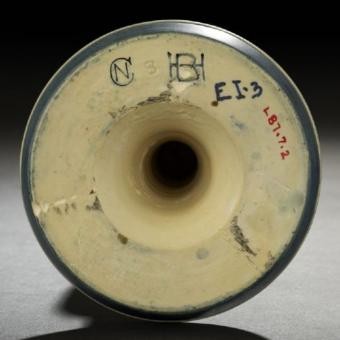
Image Source RF/Samantha Mitchell / Getty woman inspecting pottery
How Marks Affect Antique Pottery Values

Weller Pottery Mark

Van Briggle Pottery Mark

Paul Revere Pottery

Tyler Gillette personal images granted to LTK by Tyler Gillette - on file with lovetoknow Paul Revere Pottery
Roseville Pottery

Tyler Gillette personal images used by permission Tyler Gillette letter on file roseville pottery
Rookwood Pottery

Tyler Gillette personal images used by permission Tyler Gillette, letter on file with LTK Rookwood Pottery mark
Newcomb Pottery

personal collection of Tyer GIllette granted to LTK by Tyler Gillette, letter on file Newcomb Pottery
Teco Pottery

personal collection of Tyler GIllette Used by permission Tyler Gillette, Letter on file with LTK Teco pottery
Grueby Pottery

Personal collection Tyler Gillette granted by Tyler Gillette letter on file at LTK Grueby pottery
George Ohr Pottery

personal collection of Tyler Gillette used by permission Tyler Gillette, letter on file with LTK George Ohr pottery
Fulper Pottery

Tyler Gillette personal images permission granted by Tyler Gillette letter on file fulper pottery
Identifying Pottery Takes Time








